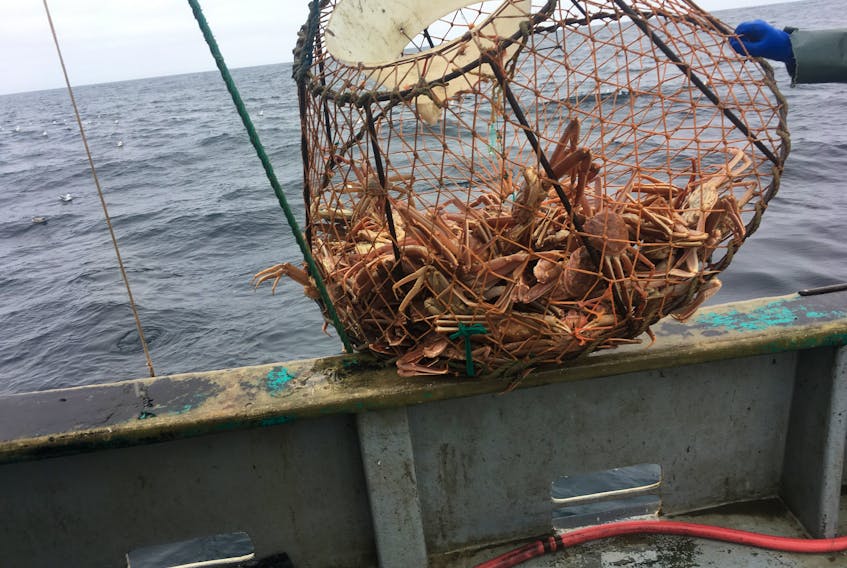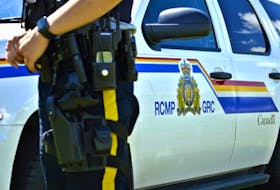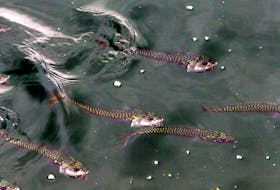BAIE VERTE, NL — It was a tough year mentally and financially for offshore fisherman Jamie Seymour, but he was more than happy to get a late-season boost.
The Baie Verte man was one of the fish harvesters able to participate in an experimental fall crab fishery this year.
The 3K Fall Crab Meat Yield Project was successful for Seymour. As one of the harvesters in NAFO 3K Area 4 with at least 25 per cent of their 2017 crab quota remaining, he was eligible to catch up to 10,000 pounds of crab using 400 pots.
The Department of Fisheries and Oceans (DFO) sought expressions of interest for the project, designed to test the meat yield of crab this time of year.
Seymour, like many crab fishermen, fell victim to heavy ice conditions this spring. When conditions finally improved, he was further plagued by the soft crab that shut down the fishery. Along with a number of fishermen and their union — the Fish Food and Allied Workers (FFAW) — he said he lobbied DFO to have a fall fishery, or to allow harvesters to recover the crab left in the water.
“They weren’t easy to convince, but eventually DFO allowed 13 boats up to 10,000 pounds each to go out as a test for this meat yield project,” he said.
Speaking for himself, he said, his meat yield was good and the response from his buyer was positive.
“The crab I brought in, I was told it was good crab — a little less meat than normal, but that’s expected this time of year,” he said. “It is good sellable crab for the U.S. market. The first thing they wanted to know was if I could go get more of it.
“Overall, my buyer called it a success.”
Seymour says harvesters should now be permitted to bring in the crab they still have in the water.
“My buyer asked me if I could go get the rest of the crab I have in the water,” he said. “I said I would love to get the rest, but you have to change DFO’s mind on that.
“As far as I am concerned, here we are with crab that we bought and paid for, that we never took out of the water during the 2017 crab season, and we have done a test fishery that so far has been positive, so why not let us go out and catch the rest.”
Seymour said conditions on the sea were good this fall. Unlike the spring of the year, he said ice is not a concern. As long as harvesters watch the forecast and stay off the water if there are any storms, he said a fall fishery would alleviate the damage to boats and gear that the spring fishery brings.
Harvesters would be less likely to risk their lives in the thick ice conditions of the spring if they knew they could rely on a fall crab fishery to get their quota, he said.
Difficult spring
Seymour called the spring of 2017 one of his worst fishing seasons yet. He had a quota of more than 84,000 pounds, priced at $4.39 cents per pound. Approaching $400,000 in potential income, he said he never landed half of it. Factor in the excessive amount of bait he said he used earlier this year, and it was a difficult time financially.
“I was out there earlier this year, I hauled 100 strings of gear for 40,000 pounds,” he said. “That’s a lot of hauling for 40,000 pound. That’s a lot of bait. I went through about 18,000-20,000 pounds of bait at a $1.90 a pound, so I spent close to $40,000 in bait alone.
“Versus, when I went out last week, I hauled four strings of gear for 10,000 pounds. If I was to continue on that average, I would have only had to haul 16 strings to catch 40,000 pounds.”
Allowing each harvester the opportunity to get their quota would not only mean a lot to the enterprises and crew, but also to the plant workers who didn’t get enough hours as a result of the low crab catches this year, according to Seymour.
“The union said they are going to try, but I wouldn’t hold my breath on it,” he said. “I don’t think they are going to budge when it comes to that.”
Regardless, he hopes the fall crab fishery continues in the future.
“It is better to shut the crab down when the first signs of soft shell comes in the spring versus extending it and extending it and extending it, and the fishermen are out there raking over soft shell — destroying more than what’s brought in,” he said.
“This time of year, in the fall, put on a few weeks of fishery. You’ll have less destruction to the stocks. Even if you throw away the new hard shell, it will survive a lot better than the soft shell in the spring.”
Seymour said it is time for DFO to listen to professional fish harvesters.
“We know what we are seeing and experiencing out there,” he said.









